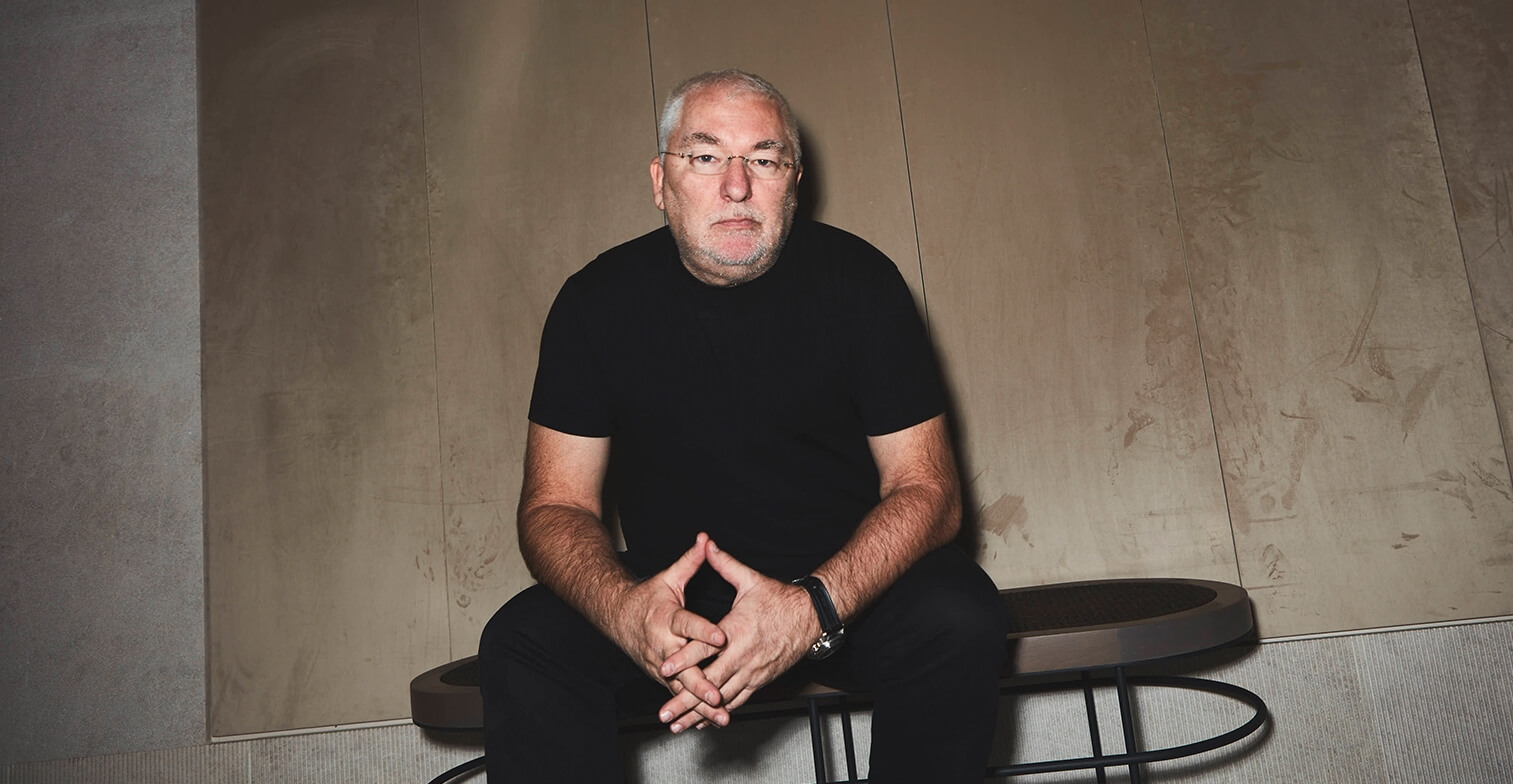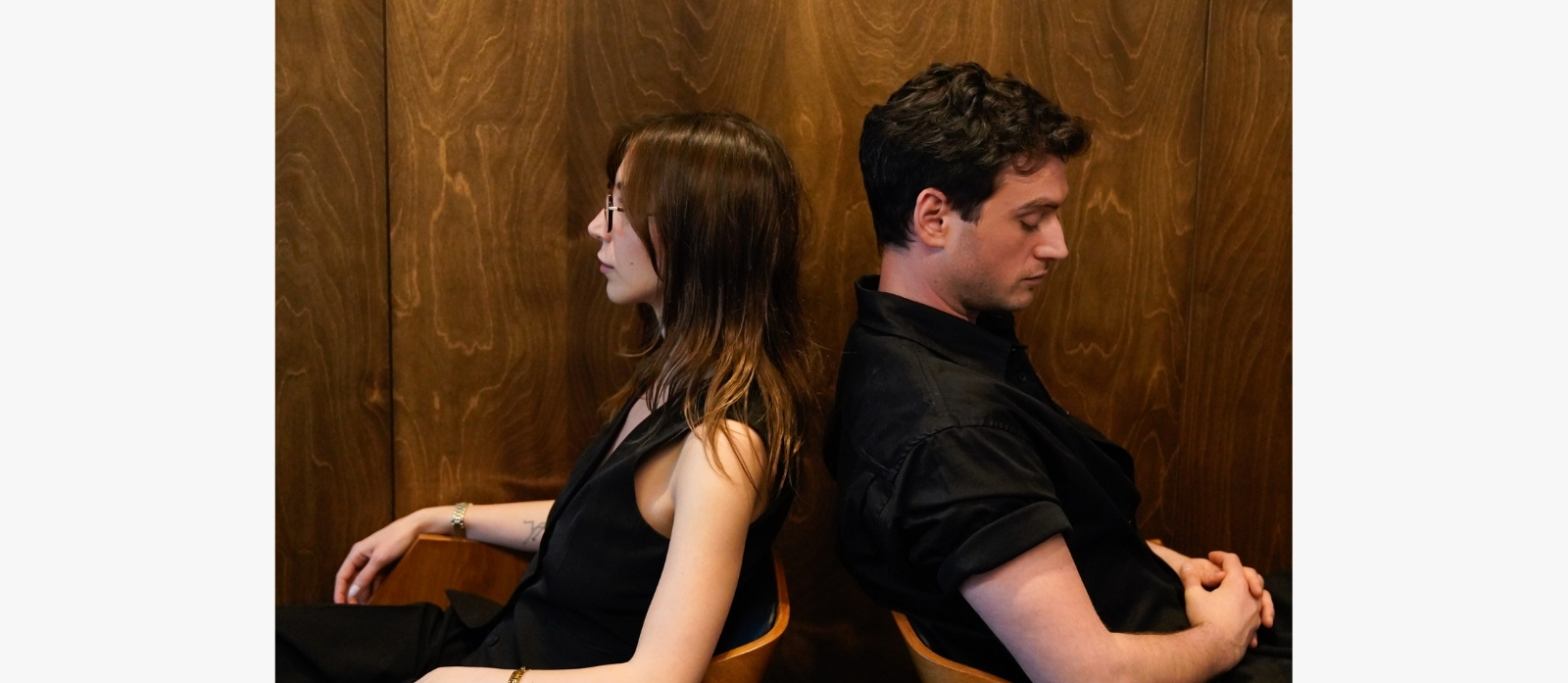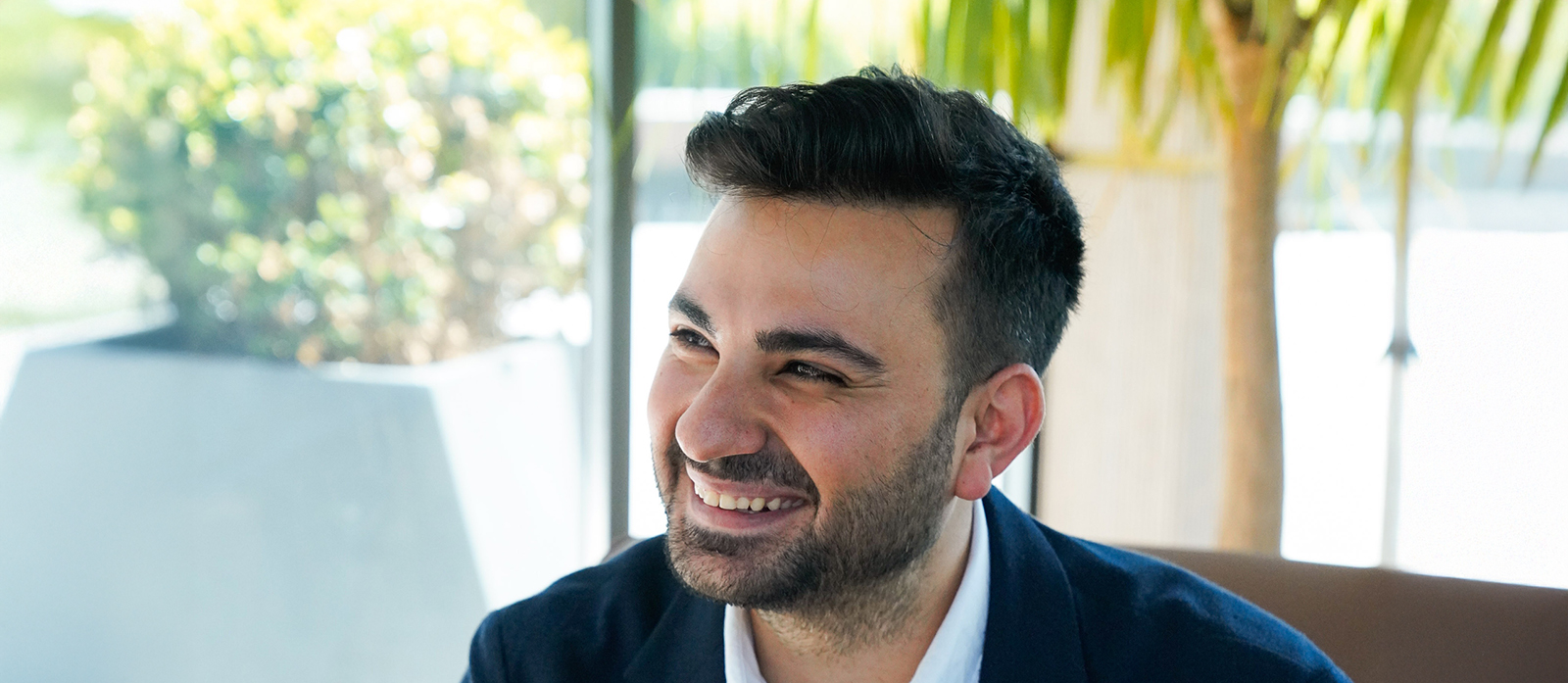
DESIGN DEFINES HUMAN PROGRESS
Apple Inc., a company founded 42 years ago, now dominates our daily experience. The company’s products with a nibbled apple sign lamented on them, actually “govern” most of us.
Apple not only penetrated into the daily life to a great extent, but its pocket- or bag-size gadgets have been shaping and curating our actions, preferences, priorities, and ideas for a while now. And this affect is not limited with the product; Apple, in its stores, also reflects this consumer lifestyle in which products, learning and services are combined.
Tim Kobe, Founder and CEO of Eight Inc., is the genius behind the unique design of Apple stores. He was at Ferko Signature managed by Assembly to attend a small, VIP meeting. After the program, we found the chance to ask him our questions about the foundation of Eight Inc., his relationship with Apple Inc and Steve Jobs, his priorities in design, his branch design renewal project for Akbank and his visions about design and technology.
Interview: Elvin Vural Photography: Mert Terliksiz
I’d like to start with the foundation story of the Eight Inc. Where does it come from, where does it go?
Eight Inc. was founded in 1989, almost 30 years ago and we are now in 11 locations in three continents with a team of 200+ professionals. Our focus really is around designing human experiences. We belive, designing for human outcomes delivers the best economic or business outcomes. Our client relationships are at the core of our business strategy. We don’t believe in narrow roles like ‘users’ or ‘consumers’; humans are far more interesting and complex. We don’t think purely ‘digital’ or ‘physical’; reality is more fluid and interconnected. We create holistic experiences that become more than the sum of their parts. Our holistic approach has generated extraordinary value for clients like Apple, Citibank, Virgin Atlantic and Tesla.
You have a team of more than 200 people coming from different countries and cultures. You have offices in 11 countries. How does this multiculturalism affect your work?
Diversity and different cultures definitely contribute a lot to our design perspective. Working in different locations and different countries enable us to be collective, responsive and creative. Where we’ve seen the most interesting possibilities is where there is a diversity of culture and influence.
Your projects stem from people and are dedicated to people. How do you integrate people’s inputs, habits and needs to your projects and is that a priority for you?
We believe design defines human progress. For any design to matter it must be adopted by people. We put human outcome to the core of our business and projects. The experience you have with people, the experience you have with a product, service, it all comes away with what matters you. One of the most meaningful ways to connect a design with people is to understand how to make a product, service or architecture relevant through experience. Most design solutions work because of the experience people have with the design. The key is the relationship between a company and their values, and the people you want to connect to; if you are not thinking of that experience, you can operate and exist, but you are leaving potential on the table and are opening yourself up to competitive threats from a number of different areas. People used to think about the term “experience” from a really functional brand ideal perspective, that is, if I am buying a computer, I need it to process things at a certain speed and rate. It is a very analytical way of thinking about things, but it leaves out the part that is actually the most emotional. Or most human. Nike does an excellent job of serving not only the functional objectives but creating emotion by emphasizing the aspirational ones.
The story of Apple stores and your work relationship with Steve Jobs must be very dear to you. How did it start, how did it evolve?
Over 20 years ago, I wrote a white paper to Steve Jobs at Apple about how they should start their retail program and that white paper ended up on Steve’s desk. That’s when he approached us to start the retail program and to work on designing the retail programme for Apple stores. Obviously, the company was much smaller than it is today, but we did know at that time we had a really unique opportunity. Up until then, Apple was sold through third party dealers and distributors so we wanted to create a retail touchpoint for Apple to express their values and distinct product offerings. We met with Steve every week for 12 years since then. We had, really, both professional and personal connections with him over the years; sort of went through all the highs, and certainly the lows, with his passing. Steve was, easily the one of the most remarkable people we have ever worked with. His ability to think about things both vertically and laterally was unique. Different dimensions, I think, is what really separates him from most people, it’s what separates extraordinary people in general. His ability to think in an analytic manner as well as being able to shift and work off a more intuitive type of method. It made him, in some cases, a challenge to work with, because people who are strong in analytics would struggle when switched to emotional or intuitive side; and conversely, people who are really sensitive and understood the intuitive side struggled with the analytics side.
You received many prizes for your projects around the world. Which ones were the ones you had the most of fun, excitement, and satisfaction?
All projects have a great amount of excitement, care and satisfaction for us because we are contributing to the brand experience and we can easily see the positive difference once the project ends. Recently, we have done successful work in branded experiences in various areas such as automotive, luxury retail and financial services. In Turkey we have recently completed the new Akbank experiences in flagship sites. For us the most interesting and satisfying projects are the ones where we see a real impact from the visitors or users; Nissan in Tokyo, Barclays in London, Akbank in Turkey. These projects are part of a transformation to a new way of doing things and I believe in progress and the experience people have with these types of businesses.
Design thinking is obviously going to conquer the world, or at least we hope so. How is this trend going to change the future of the organizations and businesses?
Design awareness globally has grown thanks to a better understanding of design and design thinking has been an important part of the process for people to begin to understand. Human centric design is important for any project and the only real way to create meaningful work. All design is about change. If design is to progress society and improve human conditions then creativity and creative processes are the keys to improve organizations and businesses. Successful human outcomes always lead to successful business outcomes.
Let’s talk shortly about the Akbank project. So, conceptually and design-wise, in 2019 we will see a very different Akbank. How is this change going to affect the nature of banking and finance?
Akbank is in a unique position to have enormous impact for its customers by improving how people engage with financial services. As digital interfaces grow into their rightful place in the financial sector, both the relevance and purpose for our relationships with banks must transform. A new form of interaction means what we do with digital devices, the transactions and exchanges will provide more on the go engagements and branches will be offering more service functions and guidance. Banks are uniquely positioned to offer new advantages for their customers through the network effect in a new weightless economy.
No matter what S-E-S they belong to, no matter where they live, no matter what age they are, do you think that people are ready to live in this high-tech and simple yet laminated design environment?
Every era has had to adapt to new technologies. That is not new but the challenges people have with change is real. New ways of doing things only become adopted if they are better solutions; if they improve the way we live, work and play. Remember we adopted television, trains and automobiles because it was a better way for most people to live. You mentioned simplicity and I believe design has a responsibility to reduce the friction that people feel with the change. Digital devices have transformed rapidly and that is frightening to some and liberating for others. Most of the challenges people have are related with the rate of change.
Our generation and the one above us may be ready for this but what about the ones 70+ for example? Is there going to be a break in generations, i. e. will this high-tech world leave some of us behind?
Not everyone will adopt a new technology. It is never intended to be a one size fits all solution. People live in different ways and in different environments and require the right solution for each condition. There are very few universal solutions. We have now a capability in mobile communication and information that no other generation has ever experienced. To a certain degree there is a natural shock and backlash to any progress.
Isn’t it a bit weird that the design goes towards somewhere where everything is simple, maybe even too simple, but still, despite its simpleness and easiness, some people experience difficulties to follow the new world?
Human nature is very interesting. I am not sure everything is easy or well designed if it generates friction in adoption. Successful innovation comes with adoption. That is usually when you have a successful design.
Besides the Akbank project, are there any future projects in Turkey?
We are very excited to be in Turkey and meet new businesses and decision makers all the time. We’re currently engaged in discussions with companies in construction, aviation, hospitality and retail. We’re excited to be in Istanbul and believe Turkey has the potential for an enormous contribution to design and innovation.
What do you think about co-working areas like Assembly?
Co working spaces in general are great environments for sharing experience, knowledge and nourish people’s creativity and inspiration. Our NYC office was at a coworking space (we recently moved to our own space) and we chose a similar setting for Turkey as well. If you’re new in the market or if you’re a startup about to grow; coworking spaces offer you the most suitable and creative environment you need. Although we’ve been doing business in Turkey for the past 3 years; our office in İstanbul recently opened and we’re hoping to grow here with a strong local team of talent.
What do you think about the business climate in Turkey? What are your favourite areas to work in?
Turkey is a very diverse place and a great center to influence the entire region. Business everywhere is commonly challenged by many outside factors and disruption is more common today than ever before. For us, strategic design is a great way to create new approaches to business challenges and overcome obstacles before they have a negative impact. We have consistently been able to turn those challenges into competitive advantage.
You also have various technology investments such as GoPlus and Arcturus. The world is digitalizing. Do you have any advice to give to business people and entrepreneurs in Turkey?
Focus on human outcomes first. 95%+ startups fail. For 43% of them the reason they fail is they are not solving a need. Andrew Ng at Stanford University in California says, “Artificial Intelligence is the next electricity.” He means it will enable a great number of applications but as with any technology what those applications become is a fundamental question. And the outcomes typically focused on human outcomes that benefit the most of people, usually offer the greatest value. Like any technology, its value lives in how well we design the application of it. Most are a technical capability looking for an application. The problem is originality. Machines and the way we think about artificial intelligence are primarily around the analytical processes of the brain. It’s easiest to replicate, and it’s the most linear. What’s interesting to me is that space is only a small portion of what human intelligence can deliver. New companies are often infatuated with a function versus human outcomes. With any new technology there can be a perceived threat or a perceived opportunity. To me the constant polar debate about AI and the fear of the rise of the machine is a distraction. What we need to fear is how other people may be using this technology for their benefit and at the expense of society.




